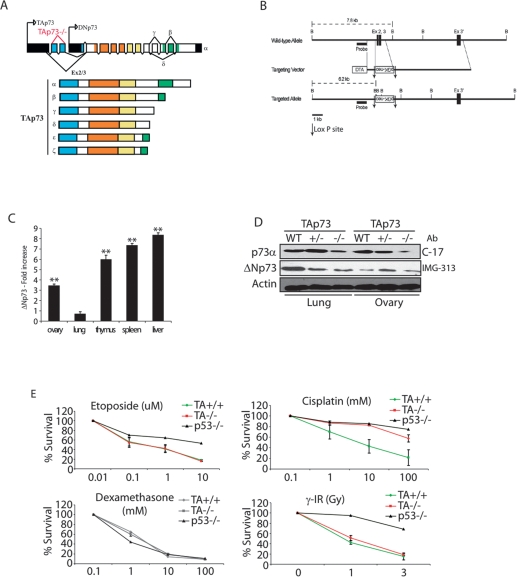Figure 1.
Generation of TAp73−/− mice and up-regulation of ΔNp73 expression. (A) Structure of the murine Trp73 gene showing the TAp73 and ΔNp73 isoform families. Domains: (blue) transactivation; (orange) DNA binding; (yellow) oligomerization; (green) sterile α motif. (B) Targeting strategy. Homologous recombination of the indicated targeting vector with the wild-type Trp73 gene resulted in the replacement of ∼1.5 kb with the neo gene and the deletion of exons 2 and 3 specific to the TAp73 isoform. LoxP sites and the probe used for Southern blotting are indicated. (C) Quantitation of ΔNp73 expression in tissues from TAp73+/+ and TAp73−/− mice. Fold increase of ΔNp73 mRNA level in TAp73−/− tissues compared with wild-type tissues by real-time PCR. (**) P < 0.01 (Student’s t-test). (D) Western blot analysis of ΔNp73 level in lung and ovary from 10-mo-old wild-type and TAp73-deficient mice. C-17 antibody is specific from α-C-terminal isoforms, and IMG-313 antibody is specific from ΔNp73 isoforms. (Ab) Antibody. (E) Thymocyte death. Thymocytes from TAp73+/+, TAp73−/−, and p53−/− mice were treated for 24 h with the indicated agents at the indicated concentrations, and percent cell death was assayed by annexinV staining and flow cytometry. Data represent the mean ± SD of two experiments.

